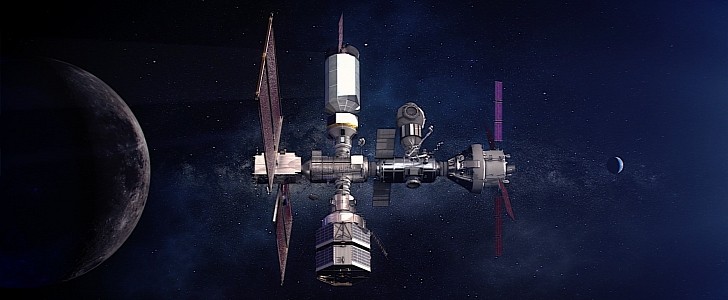A single space agency, or nation, would never have been able to embark on a project of the Gateway magnitude on its own. That is why the proposed lunar space station will be an international effort, the likes of which the world has probably never seen.
Gateway is how NASA calls a habitat, about one-sixth the size that of the International Space Station, that will be placed in orbit around to Moon to act as a staging point for acrewed mission that will be sent on the surface of the Moon, and later down the line to Mars.
In its early years, Gateway will comprise at least a power and propulsion element, as well as habitation, logistics, and airlock capabilities, all of which will have to be made here on Earth. And for that, NASA needs help.
The launch of the first Gateway element, the power and propulsion system, is scheduled for 2022; it will be then followed constantly by more and more hardware, made with international assistance, like the Canadian robotic arm to be deployed on the exterior of the Gateway, scheduled for a 2026 departure.
This week, NASA announced it enlisted the Japanese Space Agency (JAXA) to handle environmental control and life support system, batteries, thermal control, and imagery components for the International Habitation module. I-Hab, for short, is the place where people going up there will live and work.
“The capabilities provided by Japan are critical to enabling the interior environment of the Gateway allowing our crews to live and work for longer durations,” said in a statement Dan Hartman, Gateway program manager at NASA’s Johnson Space Center in Houston. “With the life support systems from Japan, longer duration missions for the Artemis crews can be accomplished with reduced demands on logistics resupply.”
Japan will be making these systems, which then will head over to Europe to be integrated into the habitat by the local agency there.
As a more long term goal, JAXA is also assessing how best to modify its HTV-X cargo spacecraft for constant supply runs to the Gateway once it’s up and running.
In its early years, Gateway will comprise at least a power and propulsion element, as well as habitation, logistics, and airlock capabilities, all of which will have to be made here on Earth. And for that, NASA needs help.
The launch of the first Gateway element, the power and propulsion system, is scheduled for 2022; it will be then followed constantly by more and more hardware, made with international assistance, like the Canadian robotic arm to be deployed on the exterior of the Gateway, scheduled for a 2026 departure.
This week, NASA announced it enlisted the Japanese Space Agency (JAXA) to handle environmental control and life support system, batteries, thermal control, and imagery components for the International Habitation module. I-Hab, for short, is the place where people going up there will live and work.
“The capabilities provided by Japan are critical to enabling the interior environment of the Gateway allowing our crews to live and work for longer durations,” said in a statement Dan Hartman, Gateway program manager at NASA’s Johnson Space Center in Houston. “With the life support systems from Japan, longer duration missions for the Artemis crews can be accomplished with reduced demands on logistics resupply.”
Japan will be making these systems, which then will head over to Europe to be integrated into the habitat by the local agency there.
As a more long term goal, JAXA is also assessing how best to modify its HTV-X cargo spacecraft for constant supply runs to the Gateway once it’s up and running.

